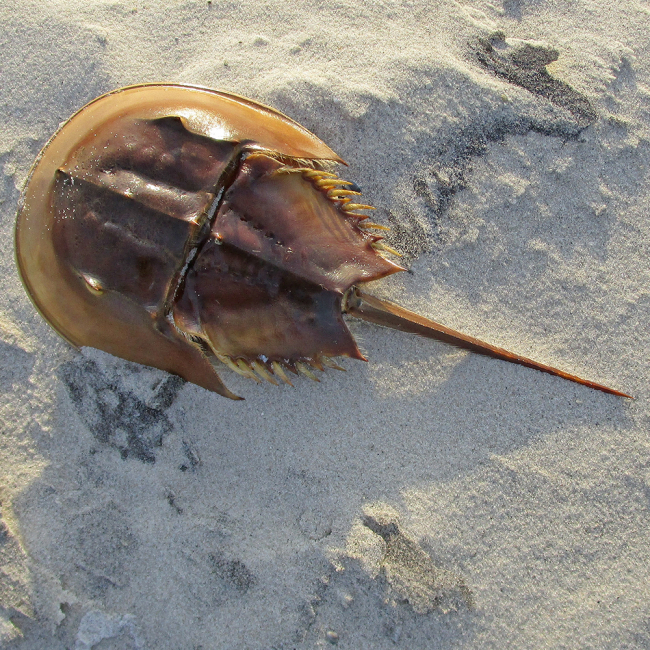
Horseshoe Crab
We all owe a debt of gratitude to the helmet-shaped horseshoe crab, whose ancestors date back 450 million years. From vaccines to needles to pacemakers, any IV drug or medical equipment that will come in contact with the human body must first be safety-checked using a test that comes from a clotting compound in the crab’s blood. This compound can detect even the smallest amount of deadly bacteria and is sensitive enough to isolate a threat equivalent to the size of a grain of sand in a swimming pool.
At what is now the Johns Hopkins Bloomberg School of Public Health, scientist Frederik Bang first observed the importance of horseshoe crab blood in 1956. By the 1970s, the U.S. Food and Drug Administration had made the Limulus test, named for the horseshoe crab’s genus, an industry standard. Ever since, the test has kept millions of people worldwide from contracting life-threatening infections.
Still, scientists are looking for an alternative for the sake of these (literally) blue-blooded creatures. More than 600,000 are caught each year and bled; roughly 20 percent die in the process. The rest are returned to sea. With climate change also affecting the species by causing habitat damage, the biotech industry may need to retire horseshoe crabs in the coming decades.
